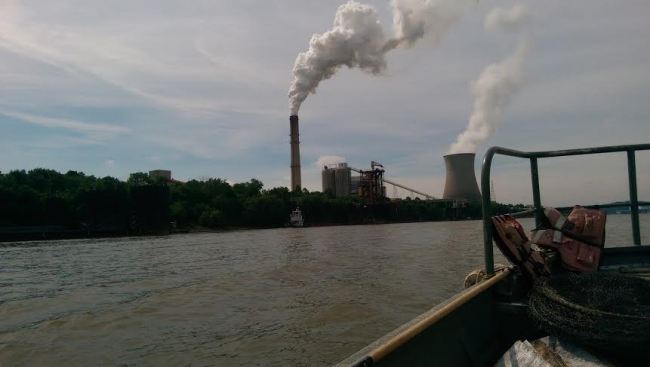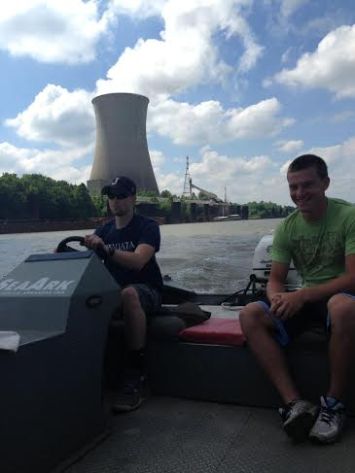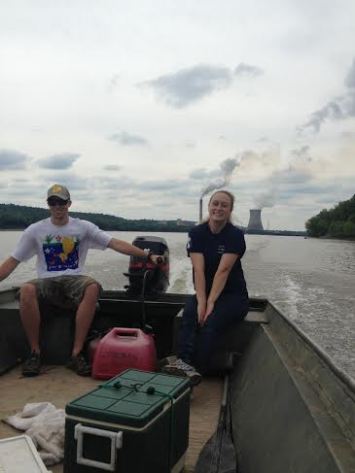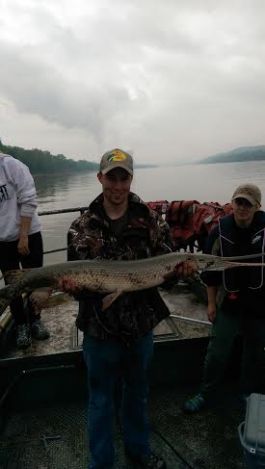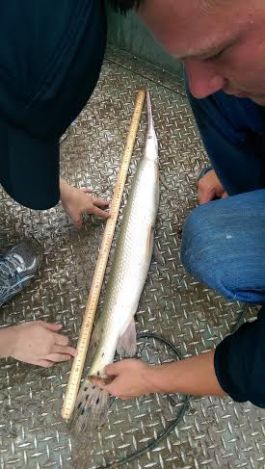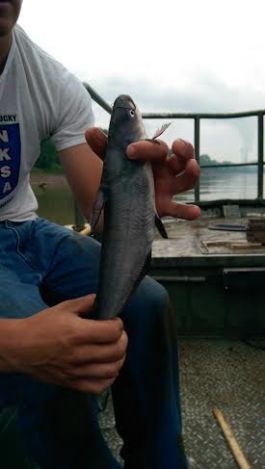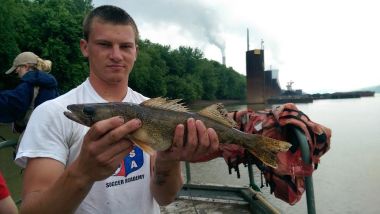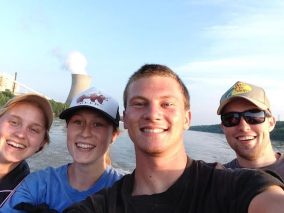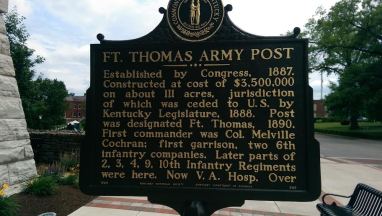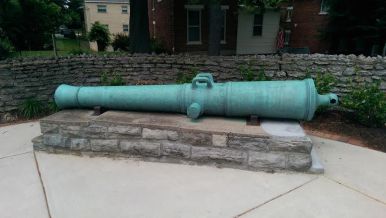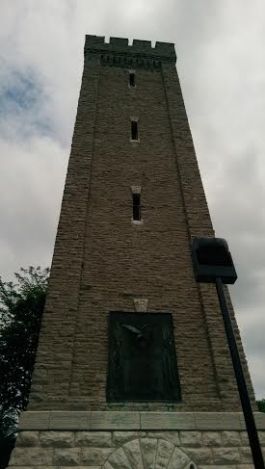Week Two
by corbilm11
This past week we began sampling for fish. This was accomplished by using gill nets and hoop nets. On Monday, we placed a gill net and a hoop net at each of our four sample sites. It is not a very complicated process, but location and positioning of the nets is critical. We attached the hoop net to a tree line and then anchored it to the riverbed with the opening of the net facing downstream. We also tied a buoy line to the hoop net, so we would know the exact location of the net. Next, we tied a tree line to the gill net with an anchor and buoy attached at each end of the net. This process was completed for our two experimental sites downstream of Zimmer power plant and our two control sites upstream of Zimmer. Once these nets are in the water, they need to be checked twice a day. Consequently, we came back that evening to check the nets. While we are checking the nets, we also collect physiochemical data at each location. We had an additional project that evening, which consisted of collecting water samples for a toxicity test. A toxicity test is conducted to determine the degree to which a substance can damage a living organism. In our case, the substance that we are going to be testing is the effluent of the Zimmer power plant to our control water upstream of the power plant. While we were collecting physiochemical data from the effluent samples, we noticed the water had a warmer temperature and a much higher conductivity than the control samples. The organisms that we are using in our toxicity test are fathead minnows. A toxicology test is an interesting tool that can be integrated to help determine the overall water quality. It is a biological test to compare how the fathead minnows live in the experimental and control water samples. When the time is up for the toxicity test, the surviving fathead minnows are dried and weighed to see if they grew while living in each water sample. If the minnows survived and grew it means that the water quality is adequate for the minnows to live. Currently, the test is not finished.
Over the next four days, we continued to check the nets twice a day. After the first day, Dr. Lorentz let us go out on our own because he felt that we are an experienced group that works well together as a team. For each fish that we sampled we recorded the weight (in grams), total length (in cm), and standard length (in cm). Once these parameters were recorded, we released the fish back into the river. The only occasions that we were unable to check our nets this past week were Tuesday evening and Wednesday evening. Tuesday evening we could not go out on the water because of strong thunderstorms and Wednesday evening we had a seminar with Dr. James Lazorchak. Dr. Lazorchak is from the U.S. EPA and his seminar title was “Comparing Single Species Toxicity Tests to Community-Level Effects of Excess Total Dissolved Solids Doses Using Model Streams.” This interesting presentation looked at different organisms used in toxicity testing and how it relates to different levels of total dissolved solids. On Friday, after we checked the nets we had to pull them out of the river because we cannot leave them in over the weekend. Once we arrived back at the Center for Ohio Research and Education, we began preparing the nets for next week. This task consists of pressure washing the debris from the nets and mending the holes in the net. Mending the holes in the nets is a very tedious process that took several hours to complete. Some of the fish species that we have sampled thus far are walleye, river carpsucker, silver redhorse, smallmouth buffalo, longear sunfish, white bass, striper, channel catfish, blue catfish, longnose gar, gizzard shad, etc. The most common fish that we have been catching in our nets is the longnose gar. However, the most interesting fish in the net was a lamprey. Unfortunately, it was able to work its way out of the net before we were able to get it on the boat.
This past week I was able to take advantage of a few opportunities in my spare time. I went fossil hunting and found interesting fossils unique to this geological region. We were searching for trilobites, but were unsuccessful at finding one. I was also able to explore Fort Thomas, which was a U.S. army post in 1890. To conclude this week, my research team and I were allowed to take one of the research vessels downstream to the Riverbend Music Center and listen to the Zach Brown Band.
Next week, we are going to continue sampling for water quality parameters and fish with our hoop nets and gill nets. However, on Thursday we are going to boat electrofishing for the first time. Additionally, next Saturday is the Ohio River Sweep, which is one of the largest river cleanup days in the country in terms of participation.
Thanks for reading,
-Luke
